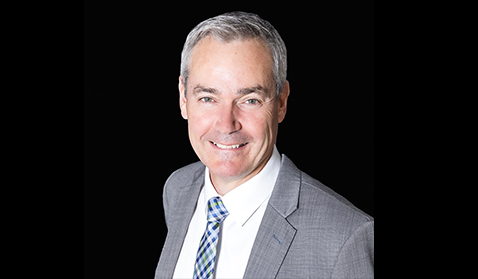It has been nearly eight months since I toured bushfire-affected local governments in NSW with LGNSW President Linda Scott, and my impressions of that time remain vivid.
We saw councils doing extraordinary things for and behalf of their communities – helping coordinate fire-fighting response, providing equipment to the NSW Rural Fire Service, opening major evacuation facilities, and organising food supplies, mobile laundries, creches, pet storage, mental health counselling, and confidential financial help.
We glimpsed councils as they set out on the long road back from natural disaster – assessing damaged infrastructure, clearing roads, implementing recovery plans, and contacting state and federal government agencies to explore options for funding recovery activities and getting local businesses back on their feet.
That initial disaster recovery activity I saw in NSW, ACT, and closer to home in South Australia, was capable and enthusiastic but it was also frustrated or held up on occasion – through no fault of local government.
For example, funding to allow councils to begin the rebuilding process arrived quickly for some councils, but took months for most. When monies did eventually appear in bank accounts, there was insufficient clarity around how the amounts had been calculated or could be challenged.
Councils which suffered from fires in October were only just starting to receive funding in March, well after relief and initial recovery works were completed and rebuilding commitments were largely in place.
Undertakings given by the Prime Minister for recovery to be “locally led” were compromised by this tardiness and the lack of eligibility clarity. Furthermore, only 3 percent of the $2 billion fund was being channeled to local government, hardly giving credence to recovery being “locally led”.
The Black Summer fires were unprecedented in their ferocity and range, so it was always to be expected our capacity to fight them and deal with the aftermath would be found wanting at some level or other.
But it shouldn’t have been that way.
Cast your minds back to the 1967 Tasmanian fires, the Ash Wednesday fires of 1983, or the Black Saturday fires of 2009 – or go to Wikipedia and read up on these and other epic natural disasters.
The historical record, global warming, and the many predictions that Australian summers are getting hotter and drier should have better prepared us for what eventuated in 2019-20.
The feedback we got from NSW councils was that while the emergency phase of the disaster was relatively well administered, recovery was less successful in the early stage.
The key take-home message from mayors and CEOs was the need for:
- better coordination between all levels of government to enable financial support to start flowing sooner;
- greater resourcing of state and territory government agencies to, for example, undertake the necessary hazard reduction burns; and
- Renewed focus on betterment funding and critical infrastructure, including definitions and legislative enshrinement to ensure political goodwill isn’t obstructed by bureaucratic road blocks.
ALGA raised these and other issues with the Morrison Government shortly after, and we canvassed them again in our submission to the National Natural Disaster Royal Commission.
Late last month, the inquiry published its interim observations, many of them endorsing ALGA’s long-standing advocacy for adequate resourcing, coordination, resilience-building and betterment.
Even though bushfires, tropical cyclones and flooding are part of Australia’s natural fabric, they are increasing in frequency and intensity, as climate scientists predicted.
This week, Federal Environment Minister Sussan Ley advised communities across the country to start preparing for the impacts of severe weather, with the Bureau of Meteorology warning of increased tropical cyclone and flooding risks.
The Australian Seasonal Bushfire Outlook is less threatening this year than last, but if we’re to be in the best possible position to weather the next natural disaster, the Royal Commission’s recommendations (due next month) must be accepted unequivocally and – more importantly – implemented.
If we start with the premise that “successful recovery is community-centred” – as the Royal Commission has rightly pointed out – we can break the cycle of natural disaster recovery history repeating itself.
But we must move past expedient rhetoric at the next disaster media opportunity.
Local government has to be genuinely recognised by other levels of government as a key agent of community relief and recovery, and provided with the necessary support and resources to succeed. This is particularly important in regional areas where councils are central and other governments’ capabilities are thin on the ground.
The road to recovery is always long, and complex. For those of you still on it, thank you, and keep up the great work.
David O’Loughlin,
ALGA President



